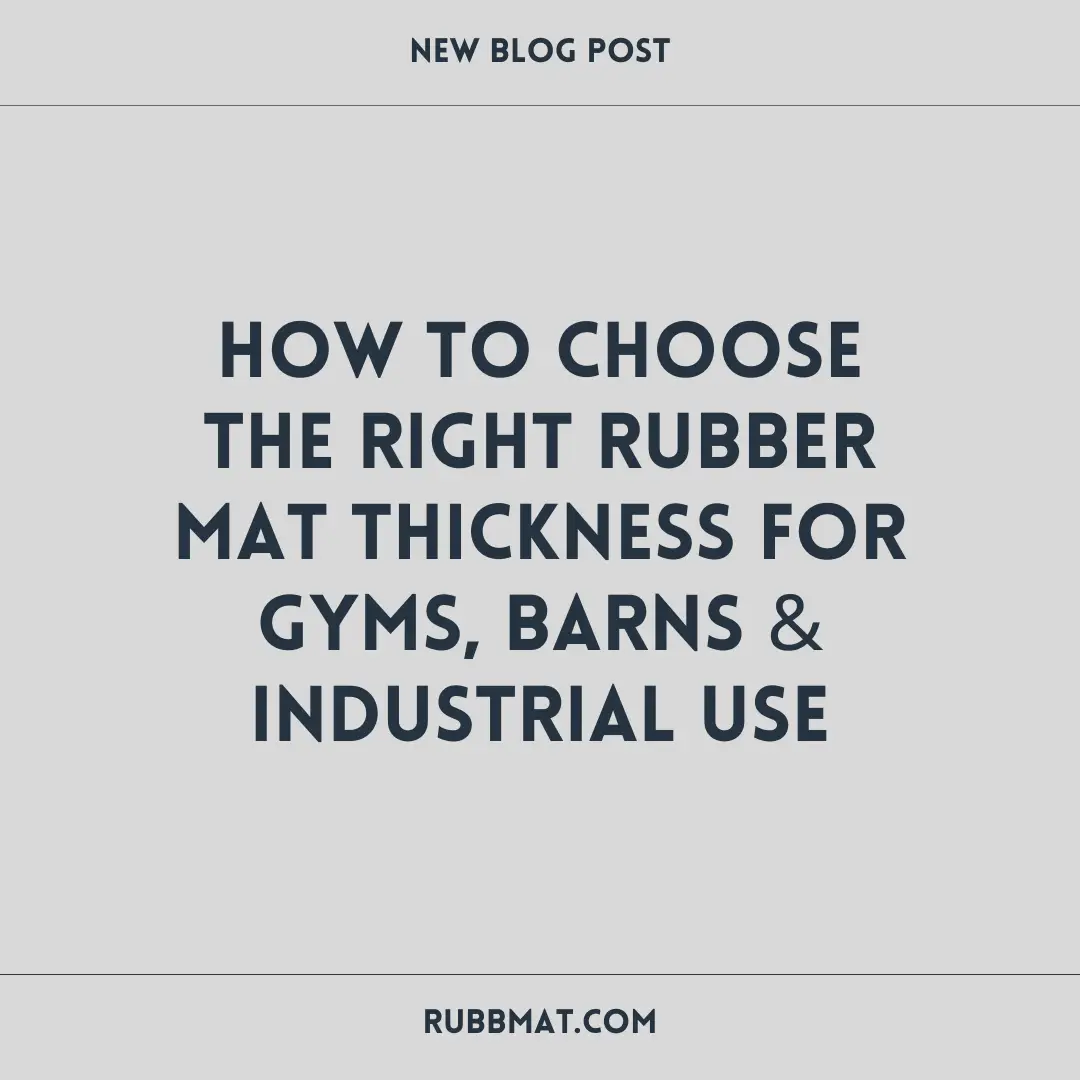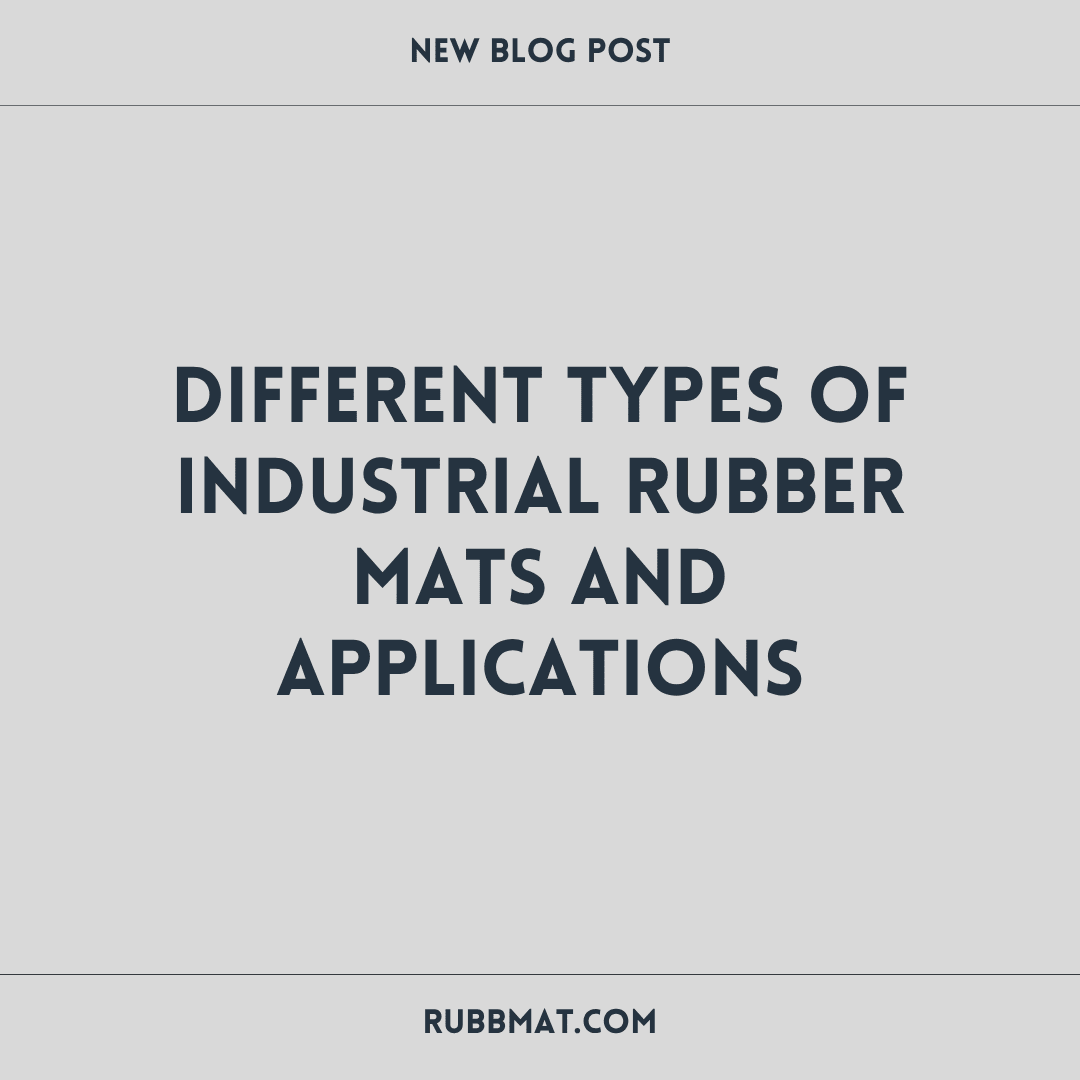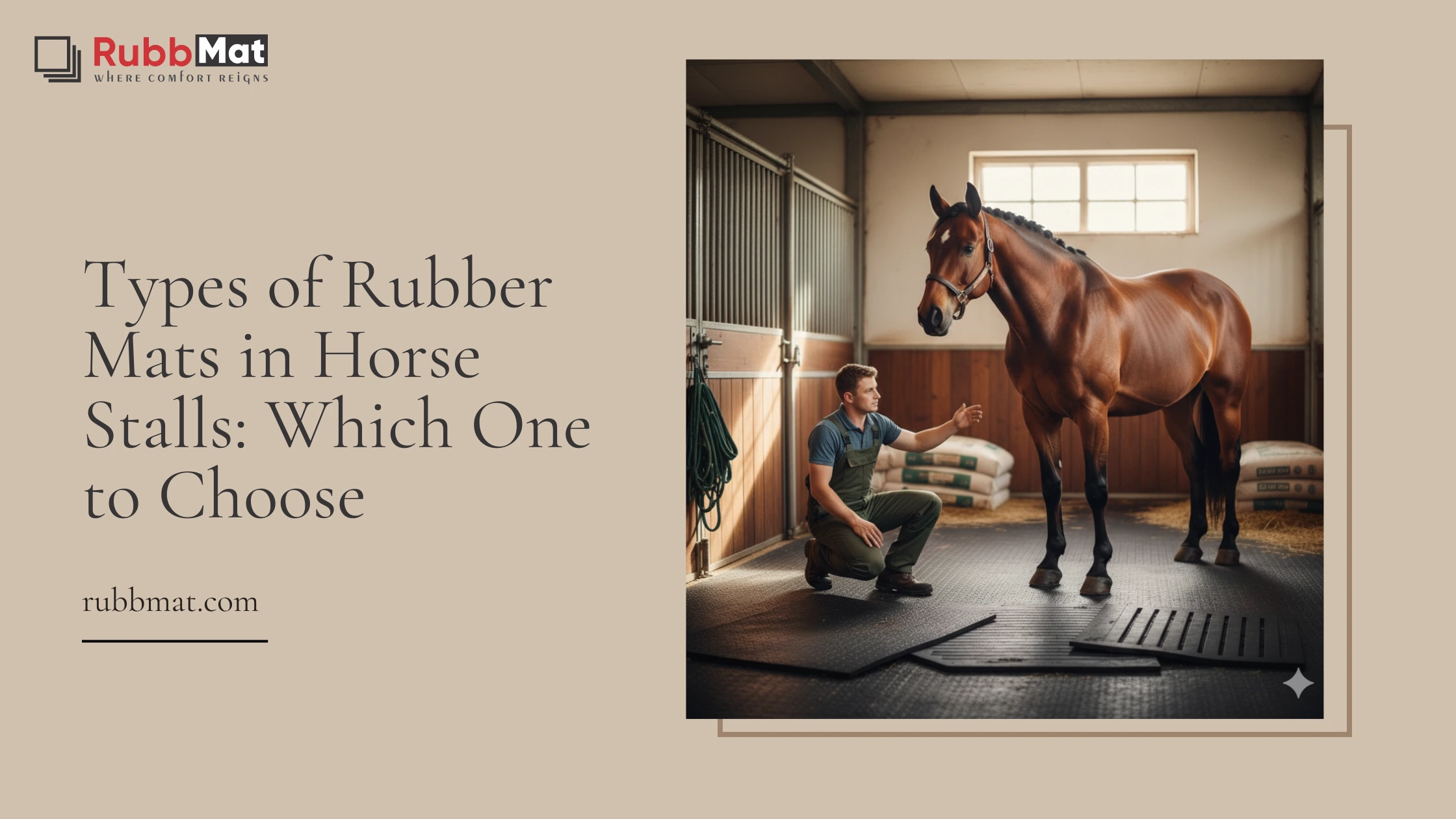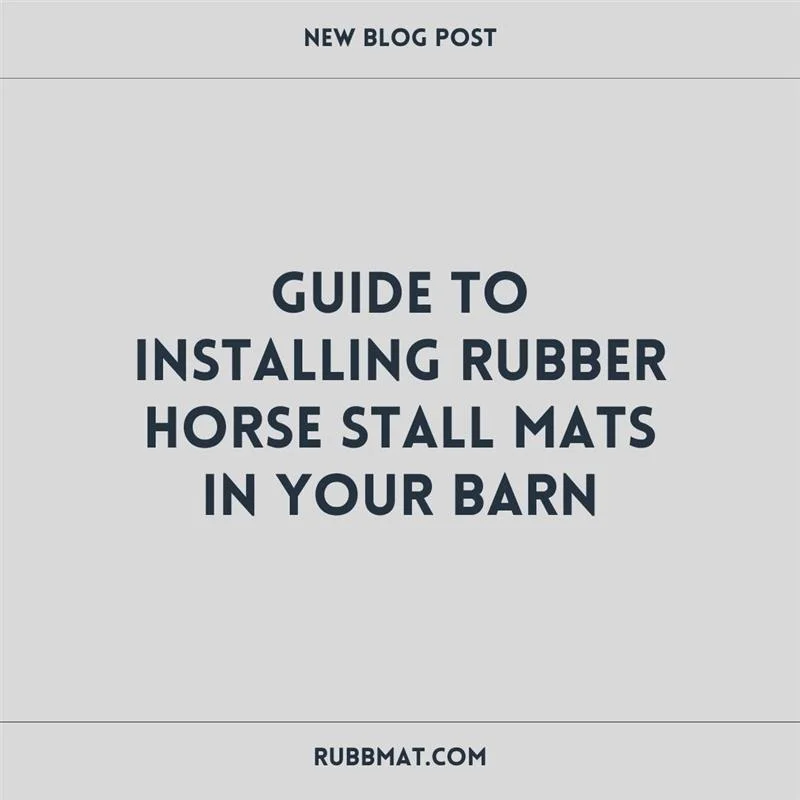
To develop an environmental setting that is safe, durable, and comfortable for your horses, you should begin with the correct flooring, and rubber horse stall mats are the most compatible with contemporary barns. They not only protect the joints and hooves of your horse but also make the process of its daily cleaning and maintenance easier and prolong the life of the subfloor of your barn. Be it the installation of new stalls or the renovation of the old ones, it covers all, including how to choose the right horse stall mats, how to fix them right, and the maintenance after installation.
Why Choose Rubber Horse Stall Mats?
Rubber stall mats offer multiple advantages that make them a preferred flooring solution in equine facilities:
-
Shock Absorption: These stall mats absorb the pressure on the legs and joints of the horse, hence providing cushioning that resembles natural ground and this is very important to the old/injured horse.
-
Thermal Insulation: Rubber mats are thermally insulating to cold concrete or bare ground and help keep your horse warm and safer against developing health problems due to constant contact with the cold, unprotected surface.
-
Slip-Resistance: Non-slip surfaces (slip-resistant), horses are not able to slip, which reduces possible injuries when they suddenly move or do it on getting up and down.
-
Ease of Cleaning: Since the waste, urine and bedding materials are readily removed on rubber mats in comparison to dirt or gravel flooring, stalls are cleaner and odors are easily controlled.
-
Long-Term Durability: Rubber stall mats do not tear, curl, or crack under continuous hoof pounding, pawing, or wear, and their durability and price are a bargain.
Types of Rubber Stall Mats
The type of rubber stall mat you use could be a determining factor in terms of comfort, durability, and safety of your barn. These are the most common and versatile that can be used on any stalls and barns:
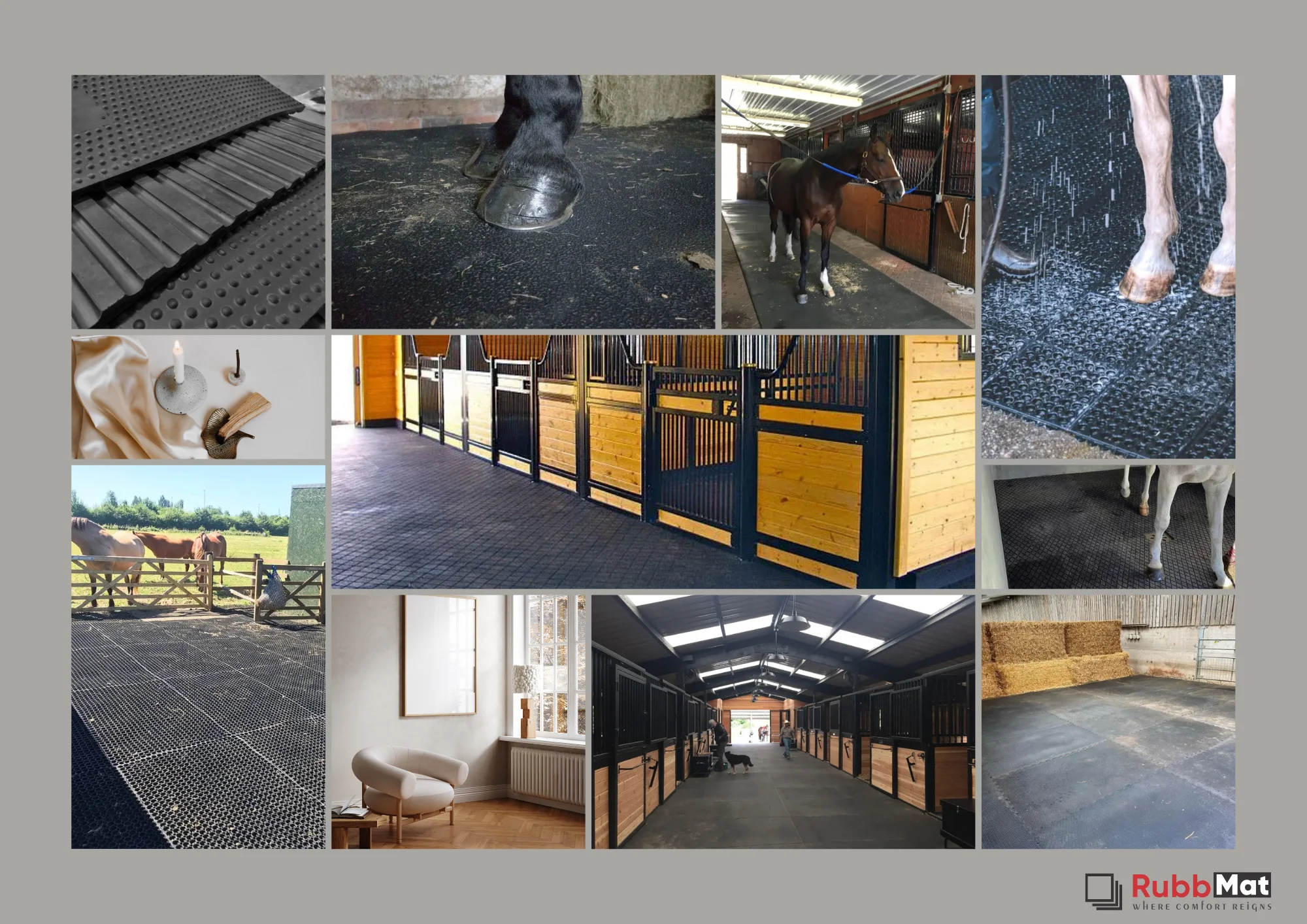
1. Amoeba Top Rubber Mats:
These mats have an amoeba-designed surface, which is very good at anti-slipping and high drainage. Perfect for wet or muddy flooring of stalls and rubber matting in stables.
2. Bubble Top Rubber Mats:
These mats are constructed with a raised bubble surface, which offers a better grip and cushioning property, rendering the mats ideal in horse stall mattress and grooming spaces where extra traction is essential.
3. Diamond Top Rubber Mats:
The diamond surface provides an improved slip resistance and simple cleaning. Ideal in places of heavy use, such as barn aisles and paths, and popular as barn stall mats.
4. Hammer Top Rubber Mats:
These mats are hammer-textured and are resistant to wear and tear, shock absorption, and have good traction suitable for stall mats where horses that are in stalls stand for longer periods and get tired easily.
5. Interlocking / Puzzle Rubber Tile:
The mats are simple to connect but are as puzzle pieces, offering a smooth, gap-free floor. They come in handy when doing a DIY installation as well as in cases where mats might need to be moved or exchanged. These are also known as interlocking horse stall mats.
6. 2 Side Interlocking Horse Mats:
Mats designed with interlocking edges on two sides allow for flexible installation along walls or in corners, preventing mats from shifting or separating under movement.
7. Hollow Walkway Horse Mats:
Specifically made for drainage-heavy areas like outdoor horse walkways or wash bays, these mats feature hollow sections that allow water, dirt, and manure to drain away efficiently.
8. Straight Edge Horse Mats:
Classic, rectangular mats with straight edges that provide tight-fitting, stable flooring for permanent stall setups. Suitable for large stalls or barn aisles where rubber stable mats are required.
9. Amoebic Interlocking Mats:
Combining the amoeba top texture with an interlocking design, these mats offer both superior grip and the convenience of easy installation and removal.
10. Diamond Interlocking Mats:
A combination of diamond-pattern surface and interlocking edges ensures secure placement and excellent anti-slip features, great for stalls and tack rooms.
11. Hollow Horse Shower Mats:
Ideal for wash bays or shower areas, these mats are designed to drain water efficiently while offering a non-slip, safe surface for horses being cleaned or groomed.
Step-by-Step Installation Guide
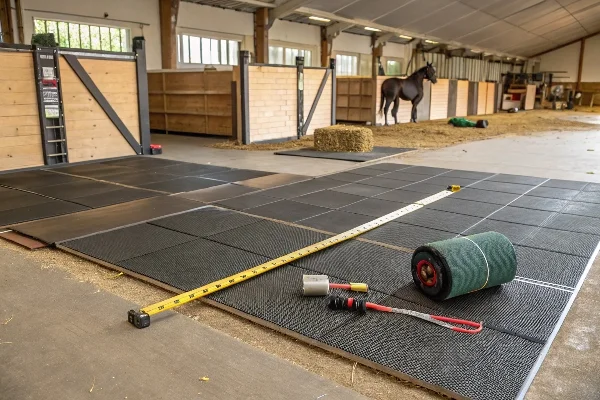
1. Measure and Plan Your Space
Wastage is avoided and there is proper fitting because of accurate measurements. A clear outline of stall dimensions with considerations of entrances, posts and waterers must also be drawn. Planning minimizes on-field modifications and also creates a snug fit between mats.
Pro Tip: Order 5 to 10% extra material to cover cutting errors or future replacements for your horse floor mats.
2. Prepare the Subfloor
A well-prepared subfloor ensures stability and mat longevity:
-
Dirt or Gravel Base: Level, compact, and remove debris or sharp objects to prevent puncturing the mat.
-
Concrete Base: Sweep thoroughly, patch cracks, and verify levelness to avoid uneven mat placement in rubber matting in stables.
-
Drainage Considerations: Ensure the floor slightly slopes for water runoff to prevent pooling under mats.
3. Cutting and Fitting Mats
Leaving the mats loose to make sure they fit. Cut to a straight edge, trim edges carefully with a utility knife or jigsaw. Provide some margin of expansion when mats are to expand in heat.
Pro Tip: Leave mats in the sun beforehand to make cutting easier, as warmed rubber horse stall mats are more pliable.
4. Install the Mats
Start in a stall corner and fit mats snugly side by side:
-
Ensure mats press tightly together with no gaps where moisture or bedding can collect.
-
Interlocking horse stall mats should firmly click together for stability; straight-edge mats may need trimming for a tight fit.
5. Check for Level, Gaps, and Stability
Take some steps on the mats to check them for moving or uneven surfaces. Regulate the base material. Mats ought to be firm when walking on them with no squishy areas and with no elevated sides.
6. Optional: Sealing or Adhesive Application
Permanent installations are particularly unstable on smooth concrete and rubber adhesive or double-sided tape should be used to impede mat movement. This is best suited to very busy barn aisles or well-exercised stock stalls, but places constraints on later movement of your stall mattress setup.
Maintenance Tips for Rubber Horse Stall Mats
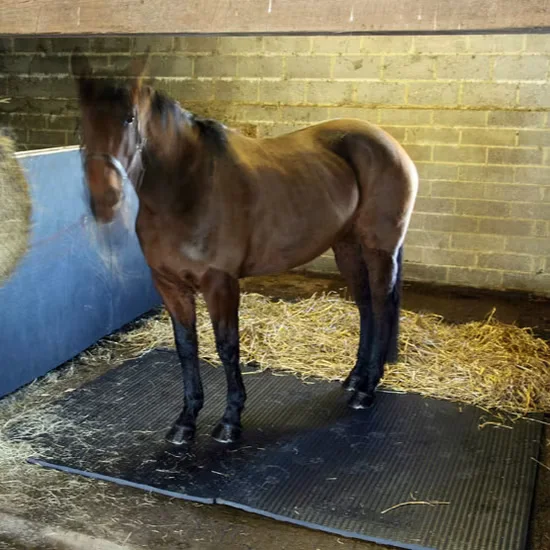
1. Daily Cleaning
Conduct a daily cleanup routine to clean up manure, wet beddings, urine and accumulation of dirt on the mats. This inhibits the growth of bacteria, minimizes offensive smells and also provides a hygienic, safe environment for your horses.
-
Use a stable fork or shovel to remove solid waste carefully without gouging or damaging the mat surface.
-
Sweep or vacuum loose bedding or debris to keep the surface dust-free.
-
Spot clean wet areas with a damp mop or sponge using mild soap and water to maintain hygiene.
2. Regular Washing
Besides ordinary cleanings, give a good wash 1 to 2 times weekly or as necessary, based on the stall usage and weather conditions:
-
Hose down mats with clean water to remove residue and deeper grime.
-
Rub with rubber-safe disinfectants or mild detergents to scrub the surface and make bacteria or fungi harmless without damaging the rubber material.
-
Wash them, in order not to leave any soap or any chemical on them, which can render the mats slippery and unsafe for the horses. This ensures your rubber horse stall mats last longer.
3. Lift & Air Out
-
Danger of moisture holding under stall mats may cause moulds, mildews, and even rot of the wooden subfloor and dirt floor.
-
Periodically (every month or when it is necessary) lift mats to completely dry the imperceptible moisture that accumulates between mats and subfloor, and check for moisture or the presence of pests.
-
Wash out and disinfect the subfloor area and put some fresh mats on it to avoid the accumulation of germs and bad smells.
Inspect the areas under the mats to make sure that there is no accumulation of dirt or bedding materials that pose a risk of injuring the mat base or surface collection.
4. Inspect for Wear and Damage
Periodically inspect your mats to make sure they are not cracked, curled at the edges and deeply gouged, which may injure the horses or caretakers:
-
Replace the mats that are too worn out or broken to provide a safe stall environment.
-
Make sure that the edges interlock and stay put and straight-edged mats fit closely and are butted together to keep the shifting between uses. This keeps horse barn mats stable and safe.
5. Maintain Proper Drainage
For stalls or wash areas exposed to moisture:
-
Ensure the subfloor and surrounding areas have proper slope or drainage channels to avoid water pooling under the mats.
-
Remove mats immediately after any flooding or excessive water exposure to dry out the area and prevent bacterial growth. This is important for maintaining the integrity of stable mats.
6. Use Rubber Mat Protectants (Optional)
Use a rubber protectant or conditioner (useful on livestock sites), once in a while, as a preventative against drying up, cracking, or hardening with age.
Stay away from petroleum-based products since it may compromise the rubber and shorten the mat's life.
Common Mistakes to Avoid:
-
Skipping Subfloor Preparation: Soft, uneven ground leads to mat shifting and accelerated wear.
-
Leaving Gaps Between Mats: Creates tripping hazards, collects waste, and allows water seepage.
-
Using Inadequate Tools: Dull blades or improper cutting tools result in uneven edges and poor fitting.
-
Ignoring Drainage Needs: Standing water causes bacterial growth and odors under mats.
Benefits of Proper Rubber Stall Mat Installation
-
Boosts Horse Safety and Comfort: Reduces stress on joints and minimizes injury risks.
-
Enhances Barn Cleanliness: Makes manure and waste removal fast and efficient.
-
Improves Stall Durability: Protects the subfloor from damage and wear.
-
Saves Long-Term Costs: Durable mats reduce repair and replacement frequency.
-
Provides Excellent Traction: Prevents slips for both horses and handlers with quality horse floor mats and rubber stable mats.
Durable Rubber Mat Solutions by Rubbmat for Every Industry
Rubbmat is a reputed manufacturer and exporter of high-quality rubber mats, which are used in many areas of the industry. Rubbmat can provide the best products: durable, anti-slippery quality rubber mats due to modern production facilities and high-quality control. Rubbmat has all the properties of rubber mats that will satisfy the needs of various environments, including agriculture, fitness, hospitality, and playgrounds. They design their product range with high-grade raw materials so as to provide long-lasting performance, comfort, and safety indoors and outdoors.
They also have a wide range of products such as cow milking parlour mats, which is used to give antifatigue comfort to the dairy cows to take better care of them and increase their milk output, horse stall mats to floor their stables and make them feel comfortable as they are joint protective and slip-resistant, gym rubber mats to floor their workouts places and increase their shock absorption and protect the floors, playground rubber mats to cushion the impact on playground areas by making the places safe and good-looking, and restaurant rubber mats to soundproof their work areas. All the types of mats exist in different sizes, thicknesses, as well as surface texture to meet the desired requirements of the certain operation and environment.
Conclusion
An installed rubber horse stall mat system will convert your barn into a hazard-free, sanitary, and comfortable setting for your horses. Whether during correct measuring and base preparation, proper fit, and frequent maintenance, each step is crucial to making the mats last longer and work to specifications. A small stable or a large equestrian center, spending money on quality horse stall mats and proper installation methods will ensure optimal treatments for your animals and to your workload in the long-term perspective.
